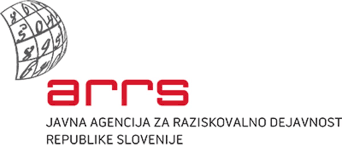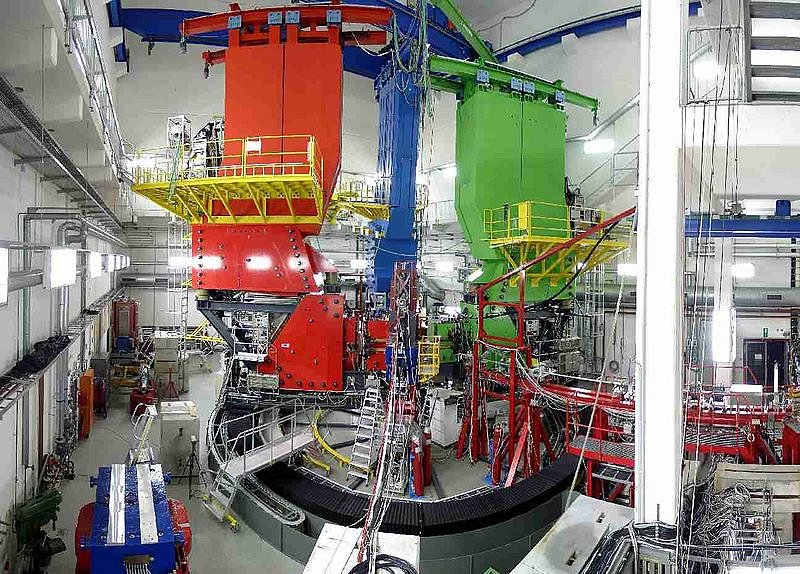Precision studies of inclusive response of light nuclei
Type of project: national project
Duration: 2022 - 2025
 Project leader: Prof. Dr Simon ŠircaCode: J1-4383Coworkers: Assist. Prof. Dr Miha MihovilovičPartners: Jožef Stefan Institute
University of Ljubljana, Faculty of Mathematics and Physics
Institute of Nuclear Physics, University of Mainz, Germany
National Institute of Nuclear and Particle Physics (IN2P3), Clermont-Ferrand, France
Department of Physics, University of Zagreb, Croatia
Center for Neutrino Physics, Virginia Tech, USA
Department of Particle Physics at the University of Tel Aviv, Israel
Department of Physics, University of Pavia, Pavia, Italy
Project leader: Prof. Dr Simon ŠircaCode: J1-4383Coworkers: Assist. Prof. Dr Miha MihovilovičPartners: Jožef Stefan Institute
University of Ljubljana, Faculty of Mathematics and Physics
Institute of Nuclear Physics, University of Mainz, Germany
National Institute of Nuclear and Particle Physics (IN2P3), Clermont-Ferrand, France
Department of Physics, University of Zagreb, Croatia
Center for Neutrino Physics, Virginia Tech, USA
Department of Particle Physics at the University of Tel Aviv, Israel
Department of Physics, University of Pavia, Pavia, Italy 
With the proposed project, we want to carry out precision experiments with electrons on oxygen and carbon nuclei, which will allow for the first time a comprehensive study of the electromagnetic properties of light nuclei and offer important new data to improve the currently very deficient models of nuclear structure and nucleon dynamics, which the community uses to interpret the signals detected in neutrino experiments.
The extensive efforts of experimental and theoretical physicists in neutrino research centers clearly show that precise measurements of neutrino masses, their mixing angles and the CP symmetry breaking phase angle are one of the key priorities of today's nuclear and elementary particle physics. In order to improve the understanding of the properties of neutrinos, the physics community is preparing (DUNE) and is already conducting (T2K) new experiments to observe neutrino oscillations. These connect proton accelerators acting as powerful neutrino sources to a series of detectors (near and far) that use carbon (MiniBooNE, T2K), water (T2K) and argon (MicroBooNE, DUNE) as neutrino detection media. In these detectors, neutrinos are identified indirectly, most often by the detection of leptons produced in inclusive quasi-elastic processes. The energy dependence of the number of muon neutrinos observed in a distant detector (called the neutrino oscillation) offers direct insight into the properties of neutrinos. The central challenge of such experiments is the lack of knowledge of the energy of the incident neutrinos. This cannot be determined from the parameters of the accelerator, nor can it be uniquely extracted from the kinematic parameters of the detected charged leptons.
In order to successfully relate the measured muon distributions to the neutrino energy distribution, we must therefore consider the measured data in combination with a Monte-Carlo simulation that includes scattering cross sections for all possible participating reactions. Unfortunately, despite all efforts, the theoretical models we use to describe the electromagnetic and weak interaction of leptons with nuclei are currently still incomplete and unreliable. The main reason for this is the lack of data from nuclear electron experiments needed to test these models. In order to improve the current situation, we in our research group have set ourselves the goal of conducting a new, dedicated experiment that will provide a comprehensive set of measurements of the inclusive scattering cross section for the 16O(e,e') and 12C(e,e') reactions at beam energy near 700MeV, which coincides with the energy of the oscillation maximum in the T2K experiment. The experiment will be organized and led by Slovenian researchers. With the help of the A1 Collaboration, it will be carried out at the MAMI accelerator using the high-resolution spectrometers of the A1 Collaboration. An inclusive scattering cross section measured at carefully selected 400 kinematic points at different energy and momentum transfers in the region of the quasi-elastic peak and delta resonance will shed light on all key elements of the electron-nucleus interaction. Such data are eagerly awaited in the community and urgently needed if we want to answer key questions in nuclear physics (such as the behavior of Coulomb's sum law for large momentum transfers) and refine our understanding of nuclear structure.
The scope of the proposed experiment is consistent with the time frame of the three-year ARRS project and includes the preparation of measurements, their implementation, analysis of the measured data and writing of the publication. In the experiment, we will help each other with developed and verified work methods and only use a standard experimental set-up that has been working successfully for many years. We expect that, with new, accurate data, we will show a significant deviation of the theoretical predictions from the real flow cross-sections. With this, we want to motivate the improvements of current theoretical models, enable new theoretical studies of the structure of the nucleus, ensure an unbiased interpretation of neutrino experiments, and pave the way to a better understanding of the basic properties of neutrinos.